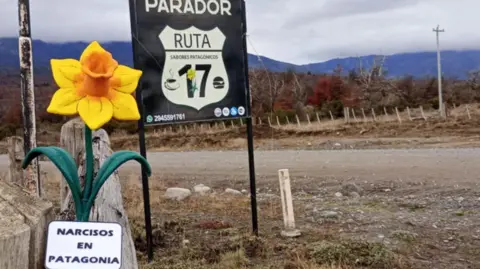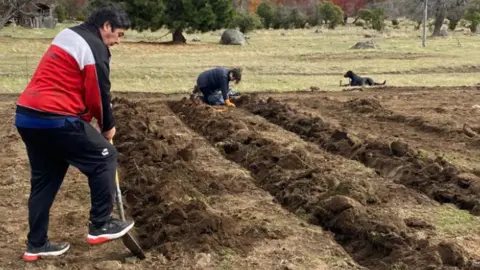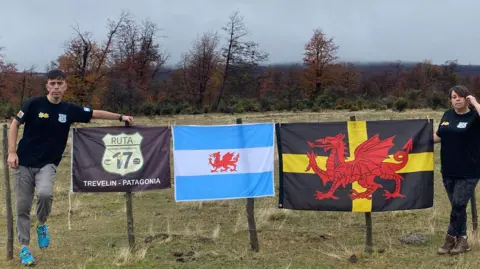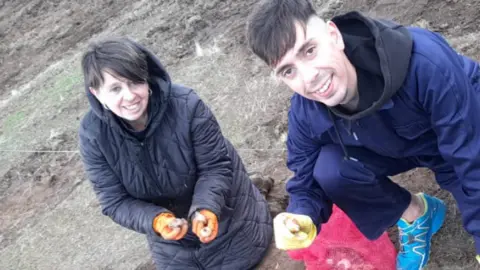Daffodils mark 160 years of Welsh settlers in Patagonia
 David Mardones
David MardonesThe descendants of Welsh immigrants who set sail to Argentina 160 years ago have planted 1,500 daffodils as a nod to their roots.
About 150 immigrants travelled to Patagonia on a converted tea clipper ship from Liverpool to Puerto Madryn in 1865, a journey that took two months.
They had set out to create a new colony where they could preserve their culture, language, and religion.
They established their own Welsh-speaking communities in Patagonia, a barren and inhospitable place at the time, and the language is still spoken in the area now.
David Mardones, who helped to plant the bulbs, said it would help them to "reinforce Welsh culture" in the area.
 David Mardones
David MardonesThe idea came from David's aunt Peca Jones, a relative of the first Welsh settlers to arrive.
It was funded by Welsh artists, Wrexham supporters groups and previous visitors to the area.
The daffodil field will be located in the Trevelin area on Route 17 near Nant y Fall.
David said the project had only been possible thanks to "all the Welsh people who united" behind it.
 David Mardones
David MardonesIt took two days for the three of them to plant the bulbs.
"We didn't have any sort of machines or anything," said David.
"Just a spade to dig these long trenches."
The bulbs are set to bloom in October, at the start of the Argentinian spring.
David has planned an official opening ceremony to commemorate the 160th anniversary with relatives of the Welsh settlers invited, along with the community and the local tourism secretary.
"It's going to be a big event to thank everyone for the love and support for the project," said David.
He added there were plans to plant more bulbs next year.
"Hopefully we'll have a drilling machine by then because my back would thank me for it," he said.
 David Mardones
David MardonesIt is also hoped that the project will attract visitors when the daffodils bloom in October.
Gwion Elis-Williams, who moved to Patagonia from Wales in 2016, said: "Hotels are booked up for miles around.
"I'm sure we will see Welsh tourists visiting and coming to see the daffodils."
Gwion and his partner Nia, who works at a local Welsh school, have seen the area grow dramatically over the years.
"It's an up-and-coming sort of destination in terms of attracting visitors," he said.
"Since we've been here, Trevelin has doubled in size in terms of population."
Gwion said it was wonderful to meet people who are "enormously proud" of their Welsh heritage.
Any bulbs not used were donated to Nia's school - Ysgol Y Cwm - where they will be planted by the children.
 Gwion Elis-Williams
Gwion Elis-WilliamsThe daffodils, a symbol of identity and rebirth in Wales, are part of an initiative to highlight the cultural connection between the two regions.
Pete Howell, who organised the fundraiser, said it was "important" for people to understand the link.
"It's amazing to think the people went over all those years ago," he said.
His job was to "get the ball rolling" to make sure they had enough bulbs.
"Some of the donations were amazing. We were getting money from all over the place," he added.
 Pete Howell
Pete HowellBut the project would have gone nowhere without David's infection enthusiasm, according to Pete.
"He was so willing to get going," he said.
"If you get something in his head it's all systems go."
Pete said he would love to go and visit the area in the future to witness the fruits of his labour.
"To see that field full of daffodils. What a story that would be."
"I'll try and save some pennies for it."
